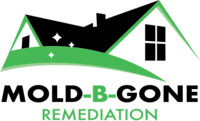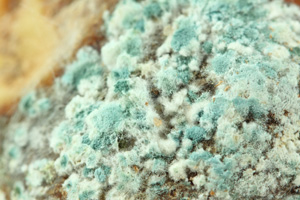Top 7 Areas Where Mold Is Growing In Your Home!
Mold needs three key ingredients to grow:
- A food source which includes high cellulose content materials such as paper and wood. Other sources of food include drywall, wallpaper, carpet, ceiling tiles, dust, and dirt.
- The ideal temperature of 5 degrees to 38 degrees which provides ideal growing conditions for mold.
- Most importantly, water and moisture is the essential ingredient required by mold to grow which can be provided by leaking pipes, roofs and ceiling, sewer backups, floods, and condensation
The core problem with mold is that it will keep growing until it is removed. This is a concern because, on average, we spend 90% of our time indoors which can cause health issues for many plus structural issues for the property if the mold is not contained and removed.
The purpose of this article is to provide you with information to help you determine if you have a mold problem and explain what you should and should not do if you do find mold.
Where Should I Look For Mold?
One of the first signs that you have a mold problem will be a “musty” or “mildewy” odor. The next step is to determine where the smell is coming from. The seven areas listed below are some of the most common areas in a home where you will find mold. Other visual clues to look for during your investigation of these areas include: buckled floorboards, discolored carpet, new water stains on the ceiling or wall, and/or actual visual growth such as black specs.
Mold Area 1: Bathrooms and Kitchens
The most common area where you will find mold is under the sinks because of leaks.
Mold Area 2: Appliances
Another potential source of leaks are your refrigerator, dishwasher, and washing machines. Check behind and under the appliances for mold.
Mold Area 3: Roof
If you notice water stains on the ceilings, then your roof could be leaking which will cause mold if the leak is not repaired.
Mold Area 4: Windows
If you have condensation in the home, you will likely find mold on the window sills and around the windows.
Mold Area 5: Basement
If there is high humidity in your home, then check your basement and other areas of the home for mold.
Mold Area 6: Closets
Leaky pipes, high humidity, and other sources of moisture can result in hidden mold in your closets. If there are boxes in the closet, move them and check the walls and floor for mold.
Mold Area 7: Crawl Spaces
Moisture in your crawl space will cause mold to grow.
I Got Mold! What Should I Do?
Two key facts to take into consideration if you think you have mold.
Mold Fact 1: Mold Spreads By Releasing Spores
If you find mold, DO NOT disturb the material. Even if you have an isolated area of mold growth, disturbing the area could potentially worsen the mold problem because the spores will become airborne and seek out other areas in the home to grow. In short, your primary objective is to contain the area where mold is growing and prevent it from spreading.
Mold Fact 2: Some Molds Are Toxic
Another key concern is determining what type of mold is growing. Some molds, like Aspergillus and Stachybotrys, are toxic and can cause many health issues. Molds also produce myctoxins which studies have shown can depress the immune system, leading to many illnesses.
What You Should Not Do If You Got Mold!
We do not recommend removing mold without first consulting a trained professional. If you think you have mold, here are 5 things you SHOULD NOT DO if you have a mold problem:
1. DO NOT Clean Mold With a Normal Vacuum!
Mold spores are extremely small and pass through a normal vacuum filter. Vacuuming, will simply spread the spores! Mold remediation professionals use HEPA vacuums because the filters trap the mold spores preventing cross contamination.
2. DO NOT Remove Mold Contaminated Materials Without Proper Containment!
If you’ve ever wondered how mold can spread throughout your house, then here’s some information for you! Mold remediation professionals will set up containment barriers to prevent mold from spreading.
3. DO NOT Clean Mold With Bleach!
Bleach is great for cleaning bacteria and viruses, but does not work on mold and may in fact make the situation worse because the simple act of applying bleach creates moisture which mold needs to thrive and grow.
4. DO NOT Remove Mold Contaminated Materials Without Wearing Personal Protective Equipment!
Some molds can be toxic. This is the reason that mold remediation professionals wear safety equipment to prevent mold spores from entering the lungs and touching the skin.
5. DO NOT Ignore or Neglect Your Mold Issue!
In addition to the health issues that mold growth may cause, keep in mind that mold is like a parasite that will keep feeding. The key to stopping mold growth is to address and fix the causes of moisture and then remove the mold so that it will not continue to spread and feed on the home, thereby impacting the structural integrity and long term value of the property.
What You Should Do If You Got Mold!
If you discover mold in your home or business, just remember that some molds can be toxic and that it is best not to disturb the mold which could inadvertently release spores in the air and create even more problems.
Before you tackle the mold problem, contact us for a second opinion and piece of mind.
Mold B Gone has been serving the residents of Georgia since 2009 and we have the training and experience to effectively advise you of the best course of action for effective mold remediation in Atlanta and ensure that it is done properly. Most importantly, we offer a guarantee on our services to provide you with further peace of mind! 🙂
Our next article will explain – 4 Key Mold Inspection Actions!
Questions? We are here to help. Call 678-697-6267 or contact us via e-mail.
What do you think the top 7 areas where #mold is growing in your home are?
Posted by Mold-B-Gone Remediation, LLC on Tuesday, August 11, 2015
7 Places #Mold Hides In Your Home! http://t.co/mIPuQnrA35 (How to find the mold and what to do!) PLS RT pic.twitter.com/lFxHWxs5jN
— Mold B Gone (@moldbgonega) August 11, 2015


